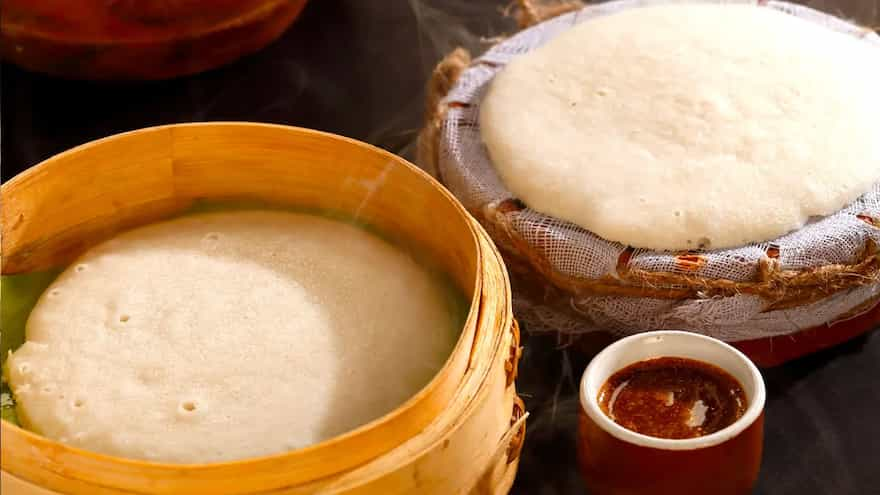From Kanchipuram idli to thatte idli, the humble idli has many variants. One of these is Kerala’s Ramassery idli: flat in shape, resembling a dosa, and known for its unique cooking style. The bottom of these idlis revealed a meshed pattern, which is a result of the cooking process.
The story goes that the makers of the Ramassery idli were weavers from the Mudaliar community. They moved to the Ramassery village near Palakkad from Kanchipuram, Tirupur and Thanjavur in Tamil Nadu, carrying the recipe for these idlis with them. As the demand for weaved goods reduced, members of this community began to sell their idlis to labourers and farm workers, and for occasions like weddings. This is how the idli came to be associated with Ramassery. Locals say that a man named Chitori Ammal was the first person to make Ramassery idli.

Only four families in the village of Ramassery have been able to preserve the idli’s original recipe. The Mudaliar families who make Ramassery idlis are related to each other. They have come to adopt Malayali customs and speak Malayalam mixed with Tamil. The current generation that prepares these idlis is the fifth in line. The quality of rice being used is of prime importance and is sourced from Palakkad. Made with the local rice, black gram, fenugreek and sea salt, the idli batter is poured onto a dampened muslin cloth, which covers an earthen pot that acts like a steamer. It is covered with another pot so that the trapped steam cooks the idli. These days, aluminium pots have replaced earthen pots. Cooks claim that the taste of the idli changes if it’s not cooked over firewood.
After being cooked, the idli is slid onto a plachi leaf, which gives it a delicate aroma. The idli is so soft that it melts in the mouth, and is served with podi or creamy curries. These idlis have a shelf life of three days and travel well. In Ramassery, Saraswathy Tea Stall is known for its Ramassery idlis. The recipe remains a secret and has been passed down through generations. Saraswathy Tea Stall sells over 500 idlis everyday. Making Ramassery idlis is time consuming and labour intensive, and so they are now cooked on gas stoves. This has resulted in a dip in the quality of the product.
Despite this, the Ramassery idli is a sought-after dish. People from far and wide visit places like Saraswathy Tea Stall to sample it. Restaurants like Kappa Chakka Kandhari, which has outlets in Bengaluru and Chennai, have added it to their menu. These efforts are small steps towards preserving a dish that would otherwise be extinct by now. Soft, fluffy and tasty, it is a reminder of village life and a community that has worked hard to preserve its culinary heritage.


